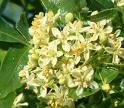Cupressus Forbesii Tree Information
Images of Cupressus Forbesii:






Cupressus Forbesii grows in the following 4 states and provinces:
California, Colorado, Hawaii, MaineInformation about Cupressus Forbesii:
The Cupressus Forbesii is commonly known as the Forbes Cypress as well as Tecate Cypress.
The currently accepted scientific name of Tecate cypress is Cupressus forbesii Jeps. (Cupressaceae) . There are no recognized infrataxa.Tecate cypress is the most widespread of the rare southern California cypress species . There are about 15 known populations . Tecate cypress occurs in four groves in southern California. Three of the groves are in San Diego County on Guatay Mountain, Otay Mountain, and Tecate Peak. The fourth is on Sierra Peak in the Santa Ana Mountains of Orange County . Isolated groves of Tecate cypress extend about 150 miles (240 km) south into peninsular Baja California . Tecate cypress is cultivated in Hawaii .Tecate cypress is a component of the southern interior cypress forest. This community is a dense, fire-maintained, low forest that forms even-aged stands surrounded by a matrix of chaparral . In San Vicente, Mexico, Tecate cypress grows with bishop pine (Pinus muricata) . Tecate cypress is also associated with closed-cone coniferous woodlands . Publications naming Tecate cypress as a community dominant are listed below. Preliminary descriptions of the terrestrial natural communities of California The closed-cone pines and cypress Vegetation change in chaparral and desert communities in San Diego County, California Woody species not previously mentioned but commonly associated with Tecate cypress include California scrub oak (Quercus dumosa), shrub live oak (Q. turbinella), Eastwood manzanita (Arctostaphylos glandulosa), bigberry manzanita (A. glauca), Otay manzanita (A. otayensis), mission manzanita (Xylococcus bicolor), hoaryleaf ceanothus (Ceanothus crassifolius), wedgeleaf ceanothus (C. cuneatus), cupleaf ceanothus (C. greggi var. perplexans), woolyleaf ceanothus (C. tomentosus var. olivaceus), chamise (Adenostoma fasciculatum), lemonade sumac (Rhus integrifolia), sugar sumac (R. ovata), laurel sumac (Malosma laurina), toyon (Heteromeles arbutifolia), curlleaf mountain-mahogany (Cercocarpus betuloides), California sagebrush (Artemisia californica), rushrose (Helianthemum scoparium), redberry (Rhamnus crocea), southern bush monkeyflower (Mimulus longiflorus), Parry nolina (Nolina parryi), whiteflower currant (Ribes indecorum), San Diego mountain misery (Chamaebatia australis), hollyleaf cherry (Prunus ilicifolia), wooly bluecurls (Trichostema lanatum), bushrue (Cneoridium dumosum), black sage (Salvia mellifera), white sage (S. apiana), fragrant sage (S. clevelandii), Munz's sage (S. munzii), heart-leaved pitcher sage (Lepechinia cardiophylla), fragrant pitcher sage (L. fragrans), chaparral pea (Pickeringia montana ssp. tomentosa), hairy yerba santa (Eriodictyon trichocalyx), yerba santa (E. crassifolium), tree poppy (Dendromecon rigida), chaparral yucca (Yucca whipplei), saw-toothed goldenbush (Hazardia squarrosa), and Mexican flannelbush (Fremontodendron mexicanum) . Herbaceous species not previously mentioned but commonly associated with Tecate cypress include eucrypta (Eucrypta micrantha), bluedick (Brodiaea pulchella), fire poppy (Papaver californicum), Catalina Mariposa lily (Calochortus catalinae), Dunn's Mariposa lily (C. dunii), scarlet delphinium (Delphinium cardinale), star flower (Enastrum sapphirinum), prickly-phlox (Leptodactylon californicum), California buckwheat (Eriogonum fasciculatum), golden-yarrow (Eriophyllum confertiflorum), California poppy (Eschscholzia californica), intermediate cryptantha (Cryptantha intermedia), and Fremont deathcamas (Zigadenus fremontii) .Some of the information provided here is attributed to:Esser, Lora L. 1994. Cupressus forbesii. In: Fire Effects Information System, [Online]. U.S. Department of Agriculture, Forest Service, Rocky Mountain Research Station, Fire Sciences Laboratory (Producer). , available at the USDA Fire Effects Information System (FEIS) website